When should I put on and switch to winter tires? We review in detail. Ministry of Emergency Situations and traffic police urge to "change shoes" cars as soon as possible
Around the question, when exactly to put winter tires, many copies have already been broken. Almost every motorist has his own opinion on this matter. Someone changes tires at the first cold snap, someone is waiting for truly winter weather and snow.
Proponents of a late tire change most often motivate this by the fact that with an early rubber change, tread wear increases and spikes may fall out.
Supporters of early tire changes want to prepare for the season in advance and put on winter tires while it is still warm enough, informs Neelov. Indeed, long-term use winter tires at high temperatures, their wear increases, so if you install winter tires too early, their life may decrease slightly.
On the other hand, if you want to put winter tires on when the first snowfall comes, there is every chance that you will not even get to the tire shop. How to find the golden mean?
I would like to immediately warn motorists that a fine is imposed on the driver only when operating the vehicle on an icy or snowy road surface. In other cases, the law is silent about the fact that the traffic police officer applied penalties to the motorist.
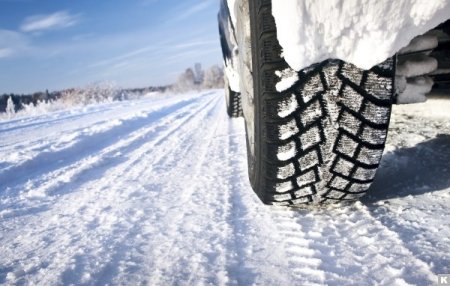
According to forecasters, the air temperature will drop below 0 degrees Celsius in Moscow next week, according to the data center. Therefore, it is necessary to prepare for the winter season now.
Experts have previously repeatedly said that winter tires need to be run in for a short time even during the period when the roads are not covered with ice. In addition, by changing tires in advance, drivers will be able to avoid queues at tire fitting.
Drivers are being urged to be more careful on the road. Soon, snow may fall in the capital, which can negatively affect the traffic situation and lead to an increase in the number of accidents.
![]()
When choosing winter tires, experts remind, one should choose high-quality tires, since in winter there are more situations when, due to bad tires, it is not possible to stop the car in time.
“Drivers should remember that the driving style in winter is significantly different from the warm season. Motorists need to remember about the longer braking distance of the car, as well as the inadmissibility of sudden braking and rebuilding, ”the representatives of the TsODD say.

When to change a car for the winter in Moscow: it is worth changing tires when the air temperature is less than 7 degrees
The beginning of the winter season is the beginning of a headache for drivers, as there is a problem with changing summer tires to winter tires. Basically, the problem arises from the fact that no one can say exactly when it needs to be done and everyone decides it on their own.
There are some unspoken rules about when to change tires. It is said that this is solved when the air temperature does not rise above 7 degrees. And some say that when you go outside in the morning and there is ice in the puddles, you should think about changing tires.
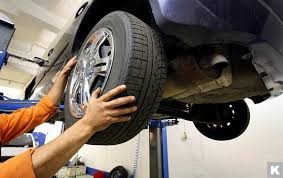
In the metropolitan area, usually by the end of October, drivers are already moving on winter tires. You can also change wheels:
But these are deadlines. It is possible to change tires earlier, depending on weather conditions.
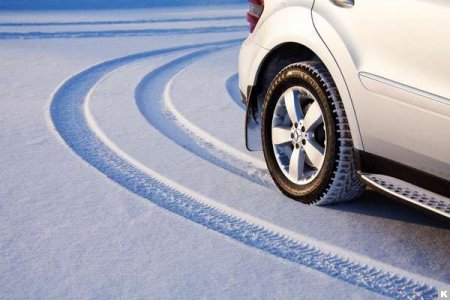
Winter tires are installed on all wheels of the vehicle. The terms of the prohibition of operation can be changed upwards by the regional government bodies of the states - members of the Customs Union ... ".
Attention!!! There is no penalty for not meeting this requirement, but there is a penalty for using worn winter tires. A fine of 500 rubles (or a warning) can be imposed on a driver who uses winter tires (marked M S, etc.), the tread depth of which at the most worn place is less than 4 mm.
Manufacturers themselves recommend installing winter tires when the average daily temperature drops below 7 degrees. At such temperatures summer tires become hard and deteriorate their properties. In principle, this is quite reasonable.
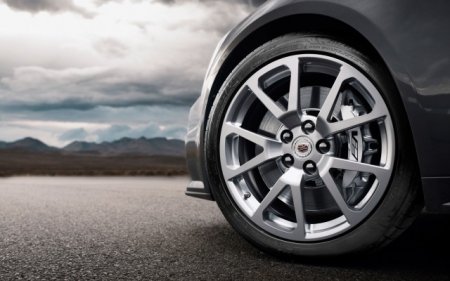
In many subjects Russian Federation, where precipitation in the form of snow is already observed, the traffic police advises car owners to change summer tires for the winter.
The State traffic inspectorate reminds that manufacturers of winter tires recommend installing them when the average daily air temperature drops to 5-7°C for at least a week.
It is worth remembering that a timely change of tires will allow the driver to confidently cope with road situations associated with adverse weather conditions.
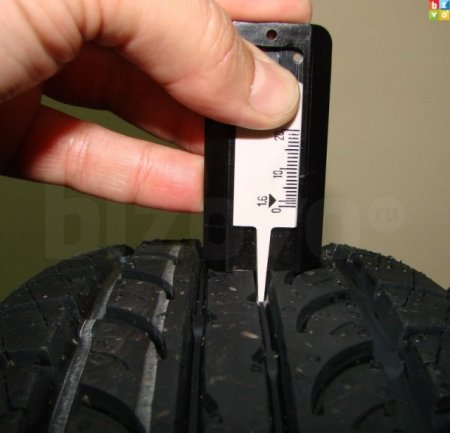
This, in turn, will help to significantly reduce the number of traffic accidents, which means saving the lives and health of road users.
We emphasize that motorists also need to psychologically adjust to the winter driving style. It is necessary to refrain from sudden lane changes and other maneuvers without making sure that they are safe.

Also, do not forget about the need to respect the distance and lateral interval between vehicles.
It is imperative that at any time of the day or night you need to drive a car with external lights on, in bad weather it is imperative to use fog lights, and in heavy fog, reduce speed to the safest possible and drive with hazard lights on.
Extremely attentive drivers need to be when driving through bridges, railway crossings, at parts and interchanges.

It is also necessary to concentrate near pedestrian crossings, and when approaching a zebra, slow down in advance.
Consider clause 5.5 of Annex 8 to the technical regulation of the customs union TR TS 018/2011 On the safety of wheeled vehicles:
5.5. It is forbidden to operate vehicles equipped with tires with anti-skid spikes during the summer period (June, July, August).
It is forbidden to operate vehicles that are not equipped with winter tires that meet the requirements of paragraph 5.6.3 of this annex during the winter period (December, January, February). Winter tires are installed on all wheels of the vehicle.
The terms of the prohibition of operation can be changed upwards by the regional government bodies of the states - members of the Customs Union.
So, what can be understood from this paragraph:
- During the summer months(June, July, August) it is forbidden to use only studded tires.
- During the winter months(December, January, February) only winter tires are allowed. You can put both studded and non-studded tires on the car. The main thing is that they are marked "M + S", "M & S" or "M S" and the corresponding pattern (in the picture on the left).
- The terms of the prohibition of operation can only be extended by local authorities and cannot be reduced. Those. in your area, for example, studded tires may be banned from May to September. At the same time, regional authorities cannot reduce the term of the ban, i.e. From June to August, vehicles in all regions must not use studs.
Thus, there are the following intervals for the use of automotive rubber:
- Summer tires(without M+S marking, etc.) can be used from March to November.
- Winter studded tires(marked with M+S, etc.) can be used from September to May.
- Winter studless tires(marked with M+S, etc.) can be used all year round
Use of all-season tires in 2016 and 2017
A separate group should be allocated to drivers using the so-called all-weather tires (intended for use throughout the year).
All-season tires can be used in the winter months (December - February) only if they are marked "M+S", "M&S" or "M S".
Otherwise, the operation of all-season tires in the winter months is not allowed.
Penalty for misuse of rubber in 2016 and 2017
In 2016 and 2017, the Code of Administrative Offenses does not contain references to the Technical Regulations of the Customs Union. Those. penalty for not having winter tires cannot be imposed. However, a draft of such a fine exists.
However, there is fine for using worn winter tires- 500 rubles (or a warning). This fine may be imposed on a driver using winter tires (marked M + S, etc.), which have a tread depth at the most worn place of less than 4 mm. I note that a fine is imposed only when the vehicle is operated on an icy or snowy road surface.
Good luck on the roads!
In anticipation of the arrival of cold weather and snowy weather, many motorists have the question "when to wear and switch to winter tires." This question is of interest to all, without exception, motorists, naturally only where there is winter. But, in view of the inexperience or carelessness of modern drivers, preparations for winter are carried out almost in the last hours, or even after the first snows and cold weather.
A lot of questions immediately arise, where to get good winter tires, how to change them correctly, when to change them, and so on.
In fairness, it should be noted that there are more responsible drivers who prepare for winter problems in advance, and there are a lot of such people.
When to wear and switch to winter tires- this is an annual question, so if everything is done properly in one year, for example, and correctly and on time to replace summer ones with them, then this procedure can be followed throughout the entire life cycle of this kit.
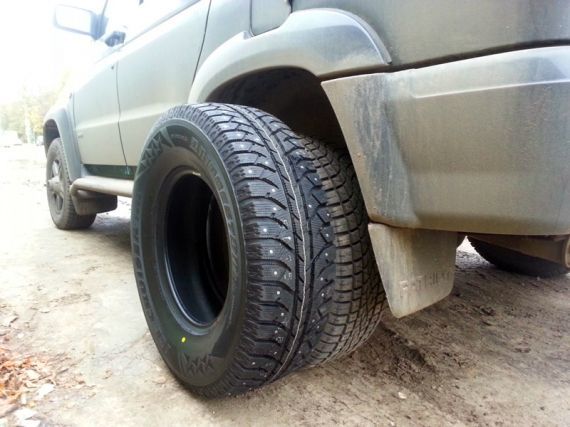
The main question asked by young and inexperienced motorists is why replace it at all, what will it give? Winter tires have a special structure behind them, both in terms of chemical composition and in terms of its structure on tires, namely the tread pattern, sipes, and all kinds of drainage channels.
In winter weather, even at severe negative temperatures, it remains soft and supple. That is, it was originally designed for frost.
Summer tires, on the other hand, are rougher in frosts and begin to lose great in technical characteristics to themselves. Summer tires in winter with a guarantee of 90% will create an emergency, so it is very advisable to take this issue seriously.
When to start changing the car?
And so, suppose that a set of high-quality, not cheap winter tires has already been purchased and is safely waiting for its finest hour. How to guess the moment when it is already worth replacing? The vast majority of manufacturers advise replacing at temperatures of 5-7°C. There are several reasons for this.
Firstly, at such temperatures it is already felt that the car behaves a little differently, this is a clear sign that the rubber ceases to fully give itself to the road.

Also, at such temperatures in car services there are not very long queues, so you will not spend a lot of time on a replacement while waiting for your turn. But, be that as it may, if you changed your tires, this does not mean that other motorists did the same, so throughout the winter and snowy weather with frosts, double attention should be paid to the roads.
Do not forget that there must be a certain pressure in the tires, very, very much depends on it, including, as well as vehicle handling.
Next no less common question is the question of what kind of rubber is better to put on a particular car, in certain winter conditions. As for the direct choice, then, contrary to popular belief, this is a very difficult and important process. After all, there are several options for winter tires.
Many of them are adapted exclusively for European winters, where temperatures are more gentle, as well as less snowy winters. Although such tires behave better than winter ones, they do not show at least some normal results.
On classic dry pavement, they have good performance, and on wet pavement too, but when driving on snow, and even more so on ice, it is impossible to work on them. So, here it is worth taking care of reading the reviews and some reviews about specific tires in advance.
Many people also look towards studded tires. As a rule, they dress in the same way as any other winter options, but this will be a little harder to work with for the first time, as they need to get used to, as the car will respond to steering, braking and other everyday actions in a completely different way. The best manufacturer of this type of tires is Nokian.
This manufacturer creates its products in Russia, so these tires are best adapted to work in the harsh conditions of Russian winters. No less popular, but already foreign manufacturers are Continental or Michelin.
But here it is worth noting that the installation of such tires can affect the quality of braking on bare asphalt. So, for example, if winter-type studded tires, in comparison with non-studded ones, give a 20% greater increase in technical performance, and the same tires on plain asphalt have a 7-10% longer braking distance. So the question of when to put on and switch to winter tires should be approached in advance and do everything carefully and with great care.
Well, of course, it would be an extreme waste to forget to do a full run-in of new rubber, both in a car repair shop and on simple roads.
The Ministry of Emergency Situations and the traffic police urge to "change shoes" cars as soon as possible. Auto experts share true signs of the optimal timing of “changing shoes”.
Experts are confident in the need to change summer tires at an average daily temperature of +5 to +7 degrees. It is better for motorists to change tires for winter tires on October 5th. "Tinsmith's Day" -2017 in the Novosibirsk region may already come on October 6 - weather forecasters promise sleet and morning ice on the roads. 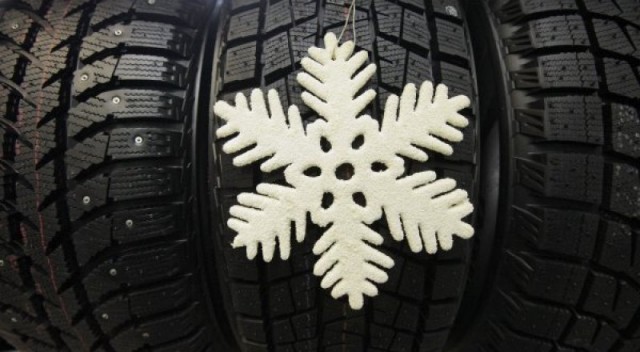
“Rubber needs to be changed already now, - Alexei Nosov, executive secretary of the Auto and Moto Association (AVAMT), is sure. - Summer tires lose their properties when the average daily temperature reaches plus 7.
If the temperature drops below, summer tires stop working, they lose their traction qualities. Summer tires are designed to operate at higher temperatures, so their composition is tougher.
Regardless of whether there is snow and ice on the road or not, at temperatures below 7 degrees it is necessary to change into winter tires. The best indicator of when this needs to be done is turning on the heating in the houses. 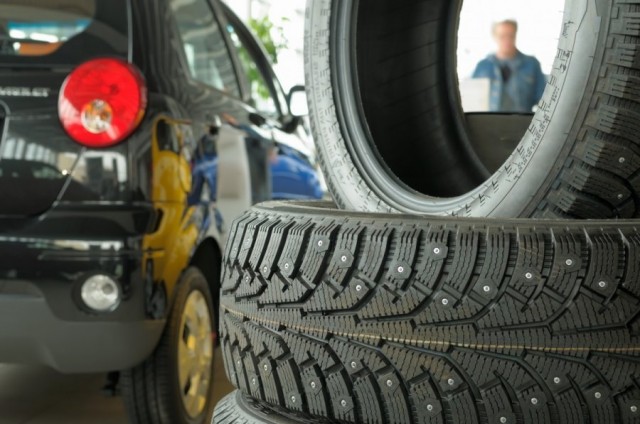
The traffic police advises car owners to change summer tires to winter tires when the average daily air temperature drops to 5-7 ° C for at least a week.
Timely change of tires will allow the driver to confidently cope with road situations associated with adverse weather conditions. This, in turn, will help to significantly reduce the number of traffic accidents, which means saving the lives and health of road users.
Drivers also need to psychologically adjust to the winter driving style. It is necessary to refrain from sudden lane changes and other maneuvers without making sure that they are safe. 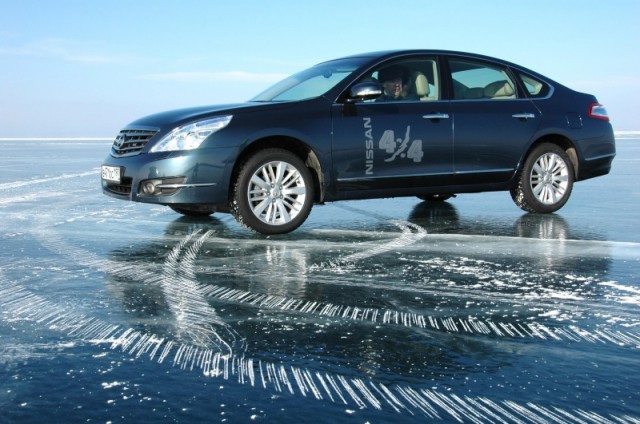
Also, do not forget about the need to respect the distance and lateral interval between vehicles.
It is imperative that at any time of the day or night you need to drive a car with external lights on, in bad weather it is imperative to use fog lights, and in heavy fog, reduce speed to the safest possible and drive with hazard lights on.
Extremely attentive drivers need to be when driving through bridges, railway crossings, at multi-level crossings of carriageways and interchanges. It is also necessary to concentrate near pedestrian crossings, and when approaching a zebra, slow down in advance, the traffic police warns.
Supporters of a late change of rubber most often motivate this by saying that with an early change, tread wear increases and studs may fall out. Supporters of early tire changes want to prepare in advance for the season and put on winter tires while it is still warm enough.
Indeed, with prolonged use of winter tires at high temperatures, their wear increases, so if you install winter tires too early, their life may decrease somewhat. On the other hand, if you want to put winter tires on when the first snowfall comes, there is every chance that you will not even get to the tire shop. How to find the golden mean?
The timing of the replacement depends on whether you change the wheels yourself or trust the tire fitting. If you change tires at a tire fitting, then you should do it in advance, because when the temperature drops, the lines to these organizations grow like a snowball. 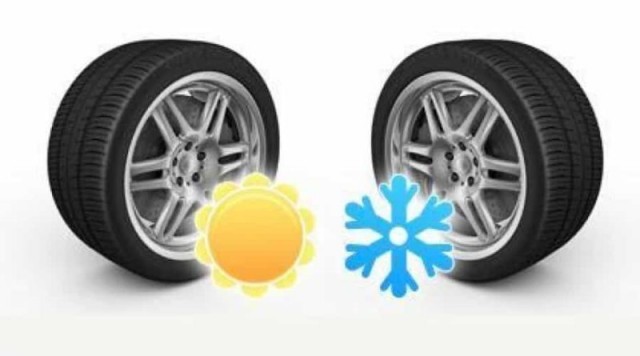
If you change the wheels yourself, then you can pull a little with the installation of a winter kit. Tire replacement times vary from year to year. For example, in 2016, the author changed tires on October 16, in 2015 - on October 5.
In any case, it is better to be prepared in advance for changing tires. Even a small accident with unexpected snow falling as always will cost you more than a couple of lost studs or slightly more than usual tire wear.
When is it legal to switch to winter tires?
Consider clause 5.5 of Annex 8 to the technical regulation of the customs union TR TS 018/2011 On the safety of wheeled vehicles: 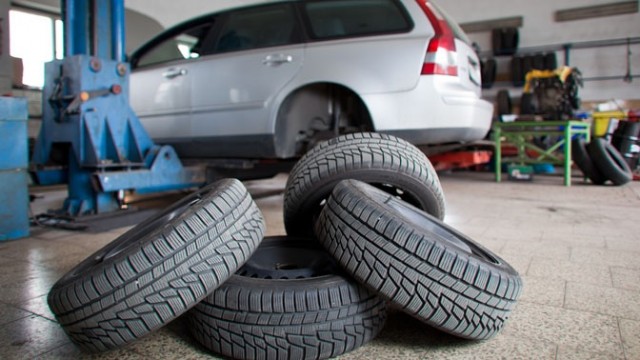
5.5. It is forbidden to operate vehicles equipped with tires with anti-skid spikes during the summer period (June, July, August).
It is forbidden to operate vehicles that are not equipped with winter tires that meet the requirements of paragraph 5.6.3 of this annex during the winter period (December, January, February). Winter tires are installed on all wheels of the vehicle.
The terms of the prohibition of operation can be changed upwards by the regional government bodies of the states - members of the Customs Union.
So, what can be understood from this paragraph:
During the summer months (June, July, August) it is forbidden to use only studded tires. 
During the winter months (December, January, February) only winter tires are allowed. You can put both studded and non-studded tires on the car. The main thing is that they are marked "M + S", "M & S" or "M S" and the corresponding pattern (in the picture on the left).
The terms of the prohibition of operation can only be extended by local authorities and cannot be reduced. Those. in your area, for example, studded tires may be banned from May to September. At the same time, regional authorities cannot reduce the term of the ban, i.e. From June to August, vehicles in all regions must not use studs.
Thus, there are the following intervals for the use of automotive rubber:
Summer tires (without M+S marking, etc.) can be used from March to November.
Winter studded tires (marked M+S, etc.) can be used from September to May.
Winter studless tires (marked M+S, etc.) can be used all year round. 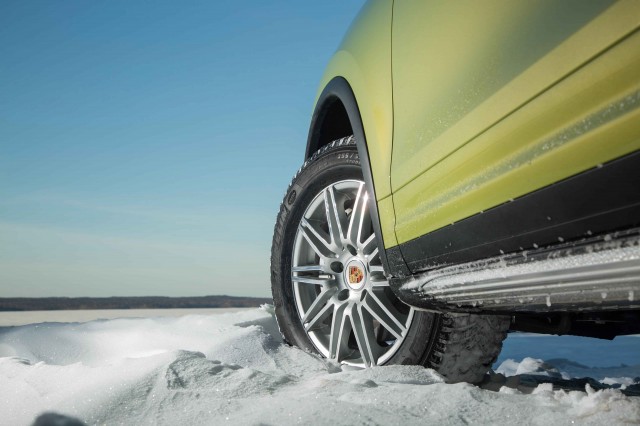
Thus, if you have summer tires (without marking) and winter studded tires, then you must replace them during the fall, i.e. from September to November.
Winter is coming, and now many drivers are wondering when is the best time to change summer tires to winter tires on their cars.
It should be noted that winter and summer tires have a number of significant differences. Winter tires are designed to give you more grip on the road. This is especially important in conditions of poor visibility and slippery road surfaces. In winter, in many regions of our country, there is often sleet on the roads. In addition, the situation on the roads is often complicated by snowfalls.
On the territory of the Russian Federation, the Technical Regulations of the Customs Union are in force, namely its section “On the safety of wheeled vehicles”. It should also be observed by car owners. Failure to comply with this regulation can lead to accidents and threaten the life of both drivers and passengers.
The traffic police recommends "changing shoes" for winter tires when the average daily temperature drops to +5 ... +7, but on condition that such a temperature lasts for at least one week. When switching to winter tires, the driver takes care not only of his own safety. Switching to winter tires reduces the number of accidents.
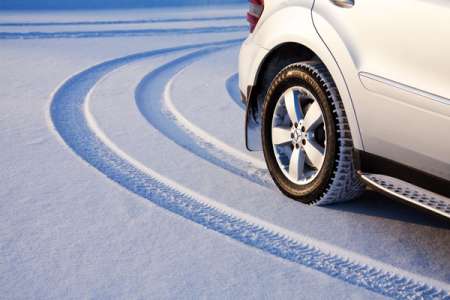
But it must be remembered that when switching from summer tires to winter tires, new tires should be run in. Experts advise the first 100 kilometers to keep the speed no higher than 80 kilometers per hour. By the way, it is better to run in new winter tires even before the snow falls.
Experts note that, having changed summer tires to winter ones, one should also change the driving style. In winter, abrupt maneuvers on the roads should be abandoned. It's important to keep your distance. Also, in winter, it is necessary to drive around the clock with external lights on.




